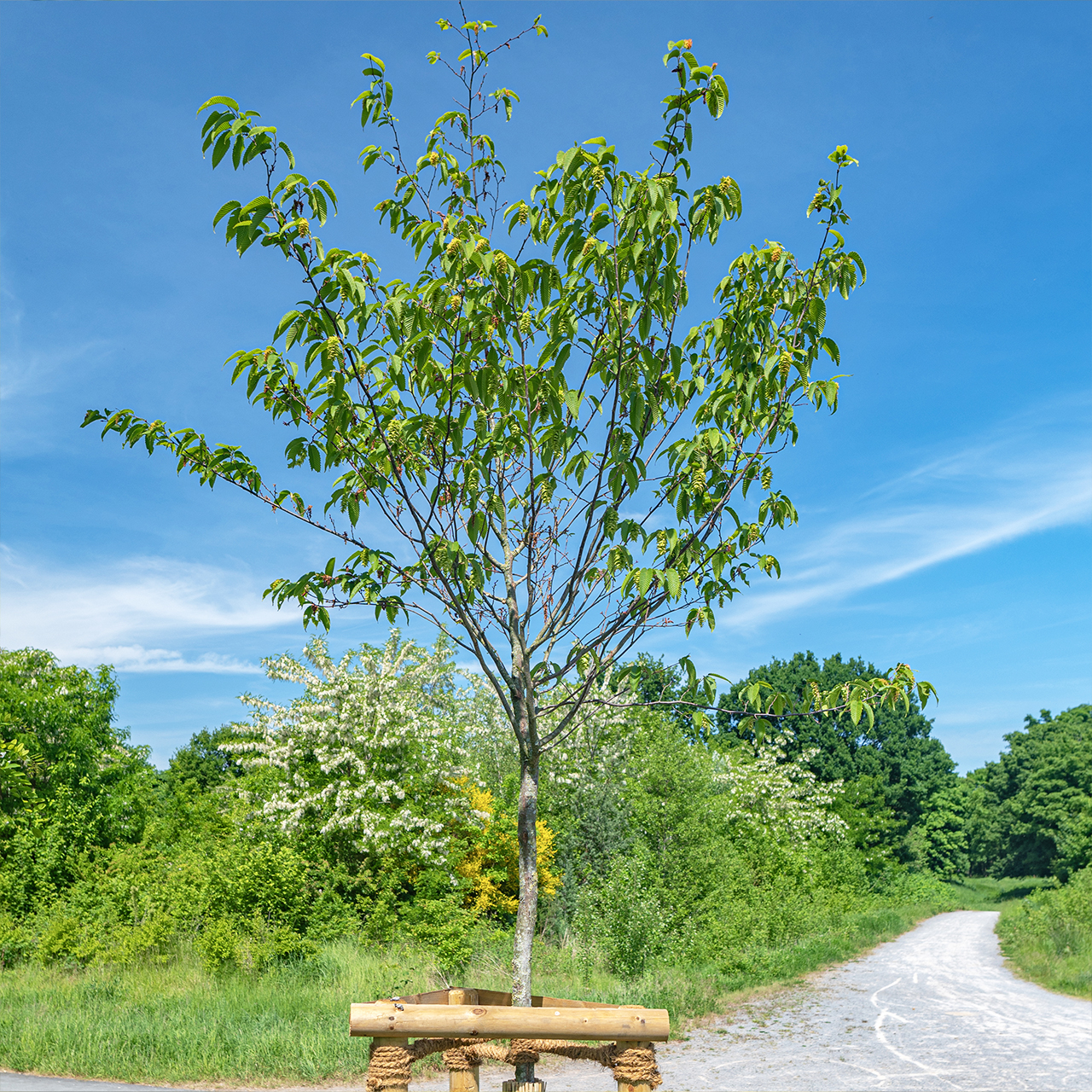Oak-leaved hornbeam
The oak-leaved hornbeam is a true rarity. Its leaves resemble those of an oak, which gives it a very special look. At the same time, it unites all the advantages of the hornbeam: It is easy to tend, does not have high requirements in terms of environment, and is also extremely robust. This makes the oak-leaved hornbeam the perfect urban tree and resident of our climate arboretum.
Oak-leaved hornbeam (Carpinus betulus ‘Quercifolia’)
| Family: | Birch, Betulaceae |
| Distribution: | Cultivar, Europe to the Near East |
| Size: | 10–12 metres in height and 4–8 metres in breadth |
| Life: | Up to 150 years |
| Requirements: | Sun to shade; it is wind-resistant and heat-tolerant |
| Soil: | Open ground surface, otherwise little demands on the soil |
| Benefits: | Cultivar with compact, dense growth |
A home in midst of industrial culture and natural landscape
In November 2017, the RAG-Stiftung and RAG Aktiengesellschaft moved into their new headquarters at the Zollverein UNESCO World Heritage Site. That marked a clear commitment to their roots and also a solution that gives both of them a secure footing on which to build their future. From now on, the RAG-Stiftung and RAG AG will pool all post-mining activities from the Zollverein.
In construction this new home, the RAG-Stiftung pursued a climate-friendly solution that took into account the protection of historical monuments. In line with the cradle-to-cradle approach, materials and components were selected not only on the basis of health and ecological aspects, but above all in terms of their recyclability. This means that the building retains the quality of its raw materials at the end of its lifespan and serves as a resource depot. This ambitious project was awarded the highest possible accolade – Platinum certification – by the German Sustainable Building Council (DGNB). The appearance of the new building stems from the striking colours and shapes that are characteristic of the existing listed buildings at the Zollverein. Thanks to appropriate planting and construction measures, it is not only the workforce that feels at home here, but also many animals, including rare species.
Occasion for planting
More than 150 commercial enterprises have so far settled at the colliery, coking plant and neighbouring parts of the former Zollverein’s facilities. The Zollverein is an economic engine and a tourist attraction that draws 1.5 million visitors a year. In August 2025, all Zollverein residents and numerous tourists will celebrate a special event: The prestigious Tour of Germany cycling race will kick off with a three-kilometre prologue at the UNESCO World Heritage Site. The oak-leaved hornbeam, which exemplifies the site’s appeal, is intended to commemorate this day.

